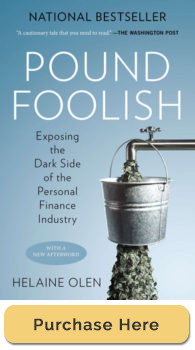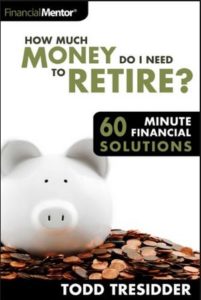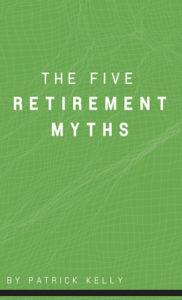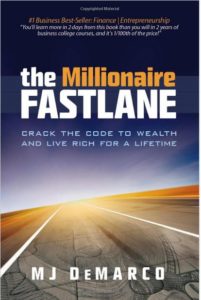
So why do we need to read Pound Foolish: Exposing the Dark Side of the Personal Finance Industry by Helaine Olen? Does she really expose anything that hasn’t already been exposed a hundred times? And if everything is as bad as Helaine says, is there any safe path to take?
Pound Foolish is essentially an expose of the Personal Finance Industry.
I originally thought it was going to be more about personal financial advisors misleading clients and selling them products that were inappropriate, there is a little of that. It’s mostly about the big names and big movers in the industry like Suze Orman, Jim Cramer, Dave Ramsey, and Robert Kiyosaki. She talks about the history of “hucksters”, as she calls them, selling their services to “help” people spend their money more wisely. And criticizes quite heavily the celebrity “gurus” for not following their own advice (filing for bankruptcy, living debt free, etc.).
You’ll be hard pressed to find anything positive in the book regarding the finance industry. And her conclusion to the book, the thought she leaves with the reader, is that we should be opening up and talking more about our finances. It almost seems like Helaine is recommending that we sit down on a couch and psychoanalyze our inner financial demons.
Pound Foolish was released in December of 2012 when the economy and housing market were still struggling to recover from the Great Recession. Helaine opens her book with this quote:
Pound Foolish will tell the story of how we were sold on a dream—a dream that personal finance had almost magical abilities, that it could compensate for stagnant salaries, income inequality, and a society that offered a shorter and thinner safety net with each passing year.
She continues to say that this “fantasy” was peddled to us by people and entities that had a “vested monetary interest in selling it to us.”
NOTE: Reading a book with an obvious political agenda is usually not my cup of tea. As I read Pound Foolish, it was obvious that Helaine was a huge advocate for social programs and government assistance. She picked her stories and presented her statistics in such a way as to further her cause instead of being objective. It was annoying. I was looking for the counter-argument in every chapter — but it never came. In fact, using her same methodology someone could write Pen Foolish: Exposing the Dark Side of Popular Journalism, in which a chapter could be devoted to Helaine and her work. But I digress…
THE STATE OF THE UNION
Pound Foolish opens up by talking about the horrible state of affairs most Americans stumbled into as a result of the financial crisis of 2008. She references a 2010 CNBC poll that showed 86% of people thought the stock market was unfair for small investors. This really shouldn’t be news to anyone. The stock market is risky and those that choose to gamble with their future get really upset when markets collapse.
Helaine proposes that criticizing the financial industry is a challenging endeavor because the advertising dollars provided by financial services and companies are massive.
In 2002, financial advertising would total $5.9 billion, rising to $8.8 billion in 2010, and just under $9.1 billion in 2011.
The result of this massive influx of advertising dollars is that financial advice entertainment, and the financial entertainers who host the shows, don’t want to bite the hand that feeds them. So what kind of advice can you give if you have to cater to your advertisers? You give general advice, or advice that is “glib.”
This advice says that mutual funds are “sure things,” or that the average return annually is between 8 and 12 percent. In other words, you don’t tell them the reality that these things can go up AND down, you just give them the rosy picture and move on.
So how do you sell advice that is general and glib? You need a good salesman. Enter the financial gurus.
SUZE ORMAN – WAITRESS TO FINANCIAL GURU
Helaine points out that Orman has “more than half a dozen bestselling books to her credit and a CNBC show, which despite being placed in the Saturday night graveyard hour still gets better ratings than anything in the cable giant’s weekday lineup.”
But she also happens to frequently contradict herself. Helaine says that Orman’s advice regarding paying down credit card debt over building up savings has changed, and she also changed her tune regarding how much cash savings you should have on hand.
But that doesn’t mean people stop calling for her advice. Oprah Winfrey called on Suze Orman for years as her financial advice woman. She has set QVC records for book sales, and she commands $80,000 for a speaking engagement. She is a hot commodity in the financial advice arena and is even a spokesperson for SelectQuote. So the question becomes…
How did Suze Orman get such a following?
Apparently it wasn’t because of a Harvard finance degree, it was her job at the Buttercup coffee shop. It was here that she earned a following of people that ultimately raised $50,000 to help her own her own establishment. She invested it with Merrill Lynch, and within a few months lost it all.
Orman was so upset that she walked into Merrill Lynch and demanded a job — which they subsequently gave her. She ended up being so successful that she left Merrill Lynch. Ultimately working for herself. She originally used a crystal at work to serve as a spiritual guide and later she brought in an elephant headed Hindu god Ganesh. This was the god that would supposedly remove material and spiritual obstacles.
Orman was not, however, an overnight success. She received a $10,000 advance for her first book, a guide to retirement entitled You’ve Earned It, Don’t Lose It. Then she began to hustle, touring two dozen cities over the course of a year. But Orman didn’t begin to soar until her publishing house managed to book her on QVC sister channel Q2, where Orman’s appearances lit up the switchboards.
Helaine says of her next book that it’s a “pastiche of basic information (“What is a revocable living trust” is one chapter subhead), and (mostly) commonsense financial advice.”
So what made Suze Orman stand out as unique in a crowded financial advice market? According to Helaine, it was the “New Age self-help sentiments attached to the most practical aspects of money management.” In other words, if Suze can do it, anyone can. You just need to believe in yourself.
Orman was on Oprah in 2008 and seemed to have no love for those that suffered in the crisis saying, “You bought homes you couldn’t afford. You took equity out of your homes to buy other things you couldn’t afford. You leased your cars. You bought new cars. You went on vacation. You bought clothes. You spent money like it was going out of style,” And then finally saying “I wish I could feel sorry for you.”
Then a year later Orman changes her tune again and endorses the Occupy Wall Street movement. “The truth is the rich are getting richer, the poor are getting poorer.” Orman advocated for mortgage write-downs and seemed to understand the situation a bit differently than she did in 2008.
But ultimately she didn’t really know much.
Helaine points out that at a “2010 conference in Long Beach, [Orman] said, “What should you do with money in crazy times? I don’t have a clue,” only to pivot moments later and advise audience members to purchase “stocks that pay a high dividend yield.”
According to Helaine, Suze Orman caters to “less than financially savvy” women. And the discussions about finance are never complicated or technical, instead leaning heavily on feelings. Orman herself claims to be worth $25 to $30 million, although the number is probably much higher.
DAVE RAMSEY – THE MAN FROM TENNESSEE
After reading the expose on Suze Orman, it’s clear we’re not going to get a glowing review of any other financial guru, but it doesn’t hurt to look at the data that Helaine presents regarding Dave Ramsey and his financial empire.
Dave Ramsey has some four and a half million Americans who apparently listen at least once a week to his radio show. “It’s about life. It’s about love. It’s about the pursuit of piles of cash. It’s the show that permanently changes lives. Live from Financial Peace Plaza, it’s the Dave Ramsey Show.”
Helaine jumps right in to share the story behind Dave Ramsey. “The son of a successful realtor, he aspired to be a wealthy entrepreneur from early on, and he went into the family trade while still in college, convincing a local Tennessee bank to lend him money to fully fund his own burgeoning real estate empire. But Ramsey’s wheeler-dealer persona was all smoke and mirrors, and everything from the Jaguar he drove to the property he owned was financed via short-term loans and lines of credit. When the bank backing him was folded into a bigger financial institution, all his monies were pulled. After a long struggle, which included defending himself against numerous lawsuits and foreclosure filings, he and his wife Sharon declared bankruptcy in 1988.”
Ramsey was at the end of his rope and ultimately ended up turning to the Bible. He turned to Proverbs 22:7 which says “The borrower is the slave of the lender,” and apparently the rest is history. He self-published his book Financial Peace and by 1992 he had a radio program, called “The Money Game.”
Helaine says that finding financial success stories in the Dave Ramsey following isn’t easy. And those she did find were often times still in debt, just not as much. It bothers Helaine that Ramsey would file for bankruptcy and then preach against it to millions of people. Especially since his debt problem wasn’t the same as most of his followers. Many of those in debt are there because they lost a job or had unexpected health issues. Ramsey was in debt because his plans for becoming a fat-cat took a left turn.
During the 90’s and 2000’s the Ramsey business soared to new heights. We don’t know how much Dave Ramsey is worth, but in 2007, the privately held Lampo Group, which is the Ramsey business, was conservatively estimated to be worth $20 and $25 million. Helaine thinks that number is an underestimate because a rival Christian advisory service known as Crown Financial reported $20.7 million in revenue for the same year. And their services are very similar, but without the notoriety of Dave Ramsey and his radio program. So it’s likely he’s worth much, much more.
The Lampo Group is there for both you and your designated personal advisers. Not Ramsey himself—he’s not licensed to sell anything but real estate. But Lampo has set up the Dave Ramsey Endorsed Local Provider (ELP) program, wherein financial advisers, realtors, tax preparers, and insurance salespeople pay fees to receive leads from Lampo, a program so successful there’s a waiting list to join.
Helaine really dislikes Ramsey and his message. Broadcasting that mutual funds will return a consistent 12% return is clearly misleading and incorrect. Suggesting that bankruptcy should never be an option. Or suggesting that Term Life Insurance is the only solid option, are all general statements that don’t take into consideration the unique situation that many find themselves in.
Here at Insurance & Estates we suggest that every situation is unique. You may find commonalities in your situation with others that have gone before you, but your financial goals, family situation, employment, and age all make a difference. One size does not fit all.
The 401(k) and The Coming Retirement Train Wreck
Pound Foolish does a good job of pulling data that shows our troubled financial position in America today. Helaine mentions that somewhere between 85 and 90 percent of people polled believed they wouldn’t have enough set aside for retirement. And yet, people are still unwilling to let go of the 401(k), a system that has under-performed in almost every way imaginable since it’s inception. Helaine says that the majority of people polled believe they will be left “destitute in old age” and would prefer to return to the pension-based system.
Here are some sobering statistics: According to Investopedia, our national savings rate fell from 8.2 percent in the 1970s to just 1.8 percent in 1993. As I write this in 2017, the savings rate is just around 3.5%. According to Fidelity Investments, the average balance of their 401(k) plans is just $81,000, with only one in five workers nearing retirement age having in excess of $250,000. This is a problem. Especially considering the amount recommended for most retirees is $1 million.
According to Teresa Ghilarducci, looking at all retirement accounts, including not just 401(k)s but also pensions and IRAs, the fees associated with these products total approximately $400 billion annually. And yet, until 2012, the Department of Labor didn’t require the people managing 401(k)s to disclose the fees within the accounts.
Here’s the kicker people.
“Brightscope found that participants in 401(k) plans with less than $10 million in assets will spend, on average, 1.9 percent on administrative fees annually.” And if you happen to work for a company with less than 100 employees, you likely pay over 2% in management fees. Those fees happen annually even if the market goes down.
It’s no wonder that John Bogle, “the founder of the Vanguard Group and the man who pioneered the low-cost index fund, has come forward to say the mutual fund and retirement industries collect so much money in fees that the entire system is a “train wreck.”
MAD MONEY – JIM CRAMER and the “CRAMER EFFECT”
Jim Cramer is the market guru behind the Monday through Friday, hour-long show, Mad Money which debuted in 2005. According to the show, if you follow his guidance, you’ll be able to leverage his expertise and earn a fortune. According to Helaine, Cramer was “a small-time hedge fund manager with high-profile media friends who went on to found the investing news Web site TheStreet.com.” He was, and is, a loud-mouth TV celebrity that markets himself as the “merchant of buzz.”
He got his start by finding companies that he thought were poised for growth, and then he would direct his employees to find some obscure positive information about the company. He would then leak that information to the analyst rumor mill. Of course, this only happened after he had bought up numerous stocks and options in the company. The price would shoot up and then he would sell for a decent profit.
Now that he has his show on TV, the mere mention of a company on the air results in the stock price rising almost immediately. This effect is called “the Cramer effect.” Of course this is only a short-term effect. The price eventually comes down in price rather quickly — usually over the course of a few weeks.
But despite Cramer’s incredible ratings success, his misses are almost a guarantee. In fact he has some notorious misses like “Bear Stearns is not in trouble!” and “No! No! No! Bear Stearns is fine! Do not take your money out!” and all this less than a week before the company collapsed.
Helaine mentioned something fairly humorous in Pound Foolish regarding Cramer. Here you have it:
Cramer’s televised take on the markets is so profoundly off that Barron’s, which has run a number of investigations into Cramer’s long-term track record, found, per the analysis of University of Dayton finance professor Carl Chen, listeners would have been better off promptly shorting any stock Cramer deems a buy.
It almost makes you want to try it out for yourself. But of course, it would still be a gamble, as the stock market always is for those on the outside looking in.
ROBERT KIYOSAKI – RICH DAD POOR DAD
Robert Kiyosaki is now a household name for those that know anything about personal finance. His Rich Dad, Poor Dad book, self-published in 1997 launched the self-professed “C” student to his tremendous success. According to Helaine, the Rich Dad, Poor Dad book found it’s way to Amway “where it became something of a cult hit.” And not long after, Oprah Winfrey invited Kiyosaki on her show.
Kiyosaki has written a handful of books, his most recent, Second Chance. It’s full of some great information, much of which can be found in his other books, including his original Rich Dad, Poor Dad.
Kiyosaki encourages people to buy assets and sell liabilities. The goal is to have more assets than liabilities. To have more money coming in than going out. Assets make money, liabilities cost money. That’s his basic mantra if you will.
According to Helaine, “Kiyosaki talks about everything from investing in oil to stocks, but he’s best known for his real estate advice. Kiyosaki claims a fortune in real estate—a fortune, by the way, that no one has ever been able to prove existed before his bestselling book turned him into a multimillionaire.”
Suze Orman has attacked Kiyosaki saying, “I did not lead millions of people down the path to lose all their money in real estate as you did. Shame on you.”
Unlike Ramsey and Orman, Kiyosaki doesn’t hate all debt. Instead he says that we are just in the wrong kind of debt. Credit card debt is bad debt, mortgage debt is good debt — or it can be. In other words, if you use your debt to finance the buying of income producing assets, then the debt is good. If you finance liabilities — that’s bad debt.
But what if it all comes crashing down? Helaine says “the real estate crash was also a huge contributor to the almost 40 percent fall in the median net worth of American households between 2007 and 2010.”
CONCLUSION – LET’S TALK ABOUT MONEY
Helaine presents a pretty bleak picture throughout the book. The hope is that she’ll provide some avenue of escape at the end. But it never comes. Her conclusion is that we need to get back to the pension system, but of course she doesn’t see that happening anytime soon. Not to mention the fact that it’s mostly out of our hands as individuals.
Her only real advice is to start talking about our finances with others. To open up and discuss. She mentions the “burgeoning financial therapy movement, a discipline that’s existed since the 1970s but has only begun to gain serious media attention in the wake of the financial crisis of 2008.” But it’s really a service for the rich as she mentions “Sessions often cost anywhere between $50 to $350 an hour and, no, not just one will do.”
She wraps-up the book with a plea for more government help:
But there is no personal finance or investment scheme that can fully protect us from downward spirals or plain old ill luck. For that we need family, friends and, finally, the government, the back-step enforcer of everything from the rule of law to insurer of last resort.
Oddly enough, as much as Helaine ridiculed those offering financial advice, she turned around the following year and released a book subtitled “Why Personal Finance doesn’t Have to be Hard.” The book, is filled with, you guessed it, simple financial advice, not unlike Suze Orman, or Dave Ramsey, or even Kiyosaki for that matter. One of her recommendations — “Maximize your 401(k) and other tax-advantaged savings accounts.” Apparently she’s following the same path as Suze Orman in that she is changing her tune to suit her needs.
The book is well written and provides a plethora of information, but it’s cherry-picked to promote an agenda that Helaine is passionate about — namely, Government programs. If you’re like me and you enjoy reading just about any take on finance, you’ll enjoy the book. If you’re looking for some insight into Infinite Banking or Premium Financing, or any other advanced strategy, you’ll have to look elsewhere.





